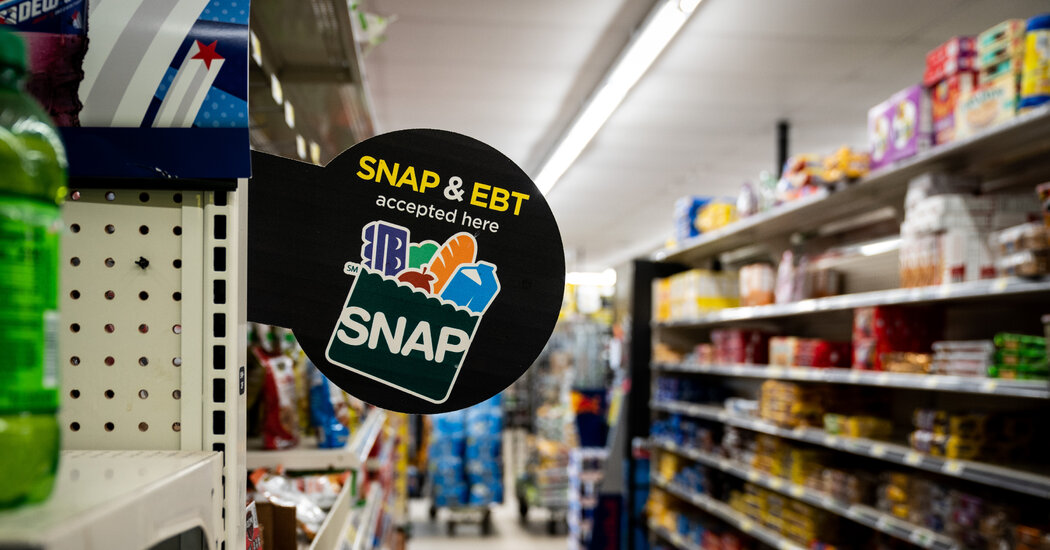About 42 million low-income Americans are set to lose access to monthly nutrition assistance in November, after the Trump administration said on Friday that it would not reconfigure the budget to provide benefits during the government shutdown.
The decision, described in an Agriculture Department memo, appeared to contradict earlier guidance from the agency that said it could tap into leftover emergency funds. The move raised the risk of some of the nation’s poorest families being unable to buy food in a matter of days.
Dozens of states have warned that they cannot provide benefits next month, and at least two have already paused delivering them, prompting a surge of demand at food banks and eliciting anxiety among recipients.
The Supplemental Nutrition Assistance Program, or SNAP, provides one in eight people in the United States with money to buy food. Those benefits, often referred to as food stamps, average about $187 per month and cost the federal government $8 billion monthly. The shutdown has put funding for the program at risk. But SNAP maintains a reserve, currently estimated to be about $5 billion, that can help cover emergencies and shortfalls.
In recent days, Democrats and Republicans urged the Agriculture Department to use this money as the fiscal stalemate entered its fourth week.
But on Friday, the agency said that such contingency funding was “not legally available” to address the shutdown, and that it was only supposed to provide food assistance in disasters and emergencies like “hurricanes, tornadoes and floods.”
Axios earlier reported the memo.
In describing its shutdown plans, the department had previously said that the contingency funds were “available to fund participant benefits.”
The White House and the Agriculture Department did not respond to questions about the change in policy. The decision came after the Trump administration reprogrammed billions of taxpayer dollars to pay workers and sustain programs central to the president’s political agenda.
The administration’s argument that it was unable to use SNAP’s contingency funding for November benefits prompted skepticism from legal experts.
“If there’s not enough money, you can use it,” said Bobby Kogan, the senior director of federal budget policy at the liberal Center for American Progress and a former White House budget official. “That is the point of the contingency fund.”
Because SNAP is an entitlement program, Mr. Kogan added, it is considered mandatory spending, meaning the department “must use the pot of money.”
David A. Super, a law professor at Georgetown University and a federal budget expert, called the memo’s rationale “absurd,” and said “nothing in the law imposes that limit” of using contingency funding only for natural disasters.
“Both the first Trump administration and this administration as recently as the end of September said these funds were available in the case of lapses in appropriations,” he said. “This is blatantly lawless.”
The Agriculture Department memo also declined to use another source of funding to pay for SNAP — customs duties typically used to fund school lunch and other child nutrition programs. During the shutdown, the Trump administration has diverted a portion of that funding to pay for the Special Supplemental Nutrition Program for Women, Infants and Children, or WIC, a grocery voucher and infant formula program.
Anti-poverty groups pressed the Trump administration to fund SNAP.
The administration should use its “authority and available resources to prevent an unnecessary disruption” to SNAP, the Alliance to End Hunger, a nonprofit, said in a statement, adding that “time is of the essence.”
Linda Qiu is a Times reporter who specializes in fact-checking statements made by politicians and public figures. She has been reporting and fact-checking public figures for nearly a decade.
Tony Romm is a reporter covering economic policy and the Trump administration for The Times, based in Washington.
The post Trump Administration Won’t Use Emergency Funds for Food Stamps During Shutdown appeared first on New York Times.




